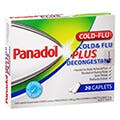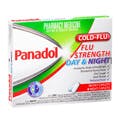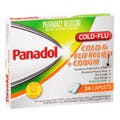
Cold & Flu
Everyone gets a cold from time to time. More than 200 different viruses can cause a cold, but the rhinovirus is the most common culprit. Its symptoms typically include runny nose and sneezing. It is worth noting that a cold is not the same as the flu (influenza). Flu symptoms are more severe and can include a fever and shaking chills, aches and pains, lethargy and headaches.
What's The Difference Between a Cold And The Flu?
The term ‘flu’ is often used to refer to a number of illnesses and may sometimes be confused with the common cold.
Influenza, or ‘flu’ for short, is actually a respiratory illness caused by viruses that can lead to fevers, headaches, coughs, sore throats and muscle aches. There are different types of viruses that can cause the flu. Most attack the body’s respiratory system – the lungs and the airways, including the throat and nose – causing classic flu symptoms such as:
- dry cough
- sore throat
- high fever, chills and sweating
- headache
- muscle aches or body aches
- tiredness and weakness.
It can sometimes be difficult to tell the difference between the flu and a cold by symptoms alone. However, in general:
- Flu symptoms last longer and may be associated with fever, shivering and muscle pain
- Cold symptoms tend to last for a shorter period of time and usually only involve a runny nose and a mild fever.
One of the best methods of flu prevention is by frequent hand washing. Avoid contact with those who are sick. If you are unwell, stay home away from work, school or social gatherings

In most cases, people with the flu will recover in five to seven days. The key is to get plenty of rest and drink plenty of fluids. Over-the-counter flu treatment medicine may also help decrease the severity of the symptoms.
Always consult a doctor if flu is suspected especially for the vulnerable such as the elderly, young babies or those with weakened body defences.







































